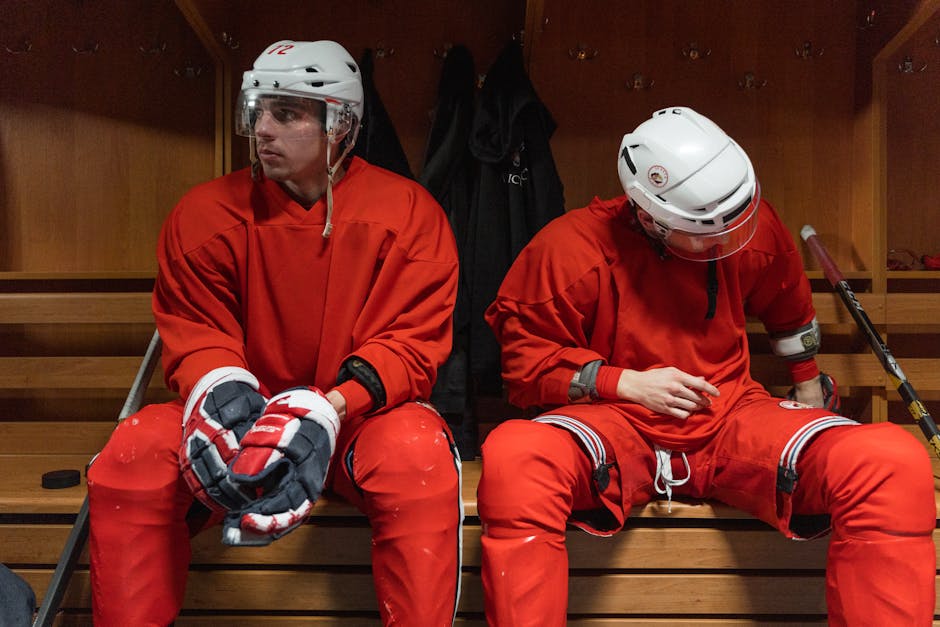
In recent years, the world of esports has expanded beyond its traditional boundaries, capturing the interest of athletes from various sports. One intriguing trend is the increasing involvement of players from the Canadian Hockey League (CHL) in the esports arena. As of 2025, this intersection of professional hockey and competitive gaming reflects broader cultural shifts and presents new opportunities for both the players and the gaming industry. This exploration takes a closer look at how CHL players are making their mark in esports, the factors driving this trend, and what it means for the future of both fields.
The Emergence of CHL Players in Esports
The Canadian Hockey League, known for producing some of the finest talents in ice hockey, has seen its players venture into the world of esports. This development comes as no surprise, considering the demographic overlap between hockey fans and gaming enthusiasts. Young athletes, already familiar with competitive environments, find esports to be an intriguing extension of their sporting lives.
Why CHL Players are Drawn to Esports
Several factors contribute to the growing interest of CHL players in esports:
- Accessibility: Unlike traditional sports, esports can be accessed from anywhere, allowing players to engage with gaming during downtime or off-season periods.
- Competitive Nature: The competitive aspect of esports appeals to athletes who thrive in high-stakes environments, similar to those found in professional hockey.
- Community and Culture: Esports offers a vibrant community where players can connect with fans and fellow gamers, fostering a sense of belonging.
- Financial Opportunities: With the booming esports industry, players have the chance to secure sponsorships and endorsements, adding a financial incentive to their participation.
Impact on the Esports Industry
The involvement of CHL players in esports is having a significant impact on the industry in several ways:
- Increased Viewership: The cross-pollination between hockey fans and esports audiences has led to an increase in viewership for gaming events.
- Diversification of Player Base: The presence of professional athletes diversifies the esports player base, attracting new audiences and adding a layer of legitimacy to the competitions.
- Marketing and Sponsorship Opportunities: Brands see the potential of leveraging athletes with a dual appeal in both traditional sports and esports, creating new marketing strategies.
- Innovative Collaborations: Collaborations between sports organizations and gaming companies are on the rise, leading to unique content and promotional activities.
The Role of Technology in Bridging Hockey and Esports
Technology plays a pivotal role in the convergence of hockey and esports. Advanced gaming platforms and streaming services have made it possible for CHL players to participate in online tournaments and engage with fans globally. These technological advancements have not only facilitated greater participation but have also enhanced the viewing experience for fans.
Streaming Platforms and Fan Engagement
Streaming platforms such as Twitch and YouTube Gaming have become essential tools for CHL players entering the esports domain. By streaming their gaming sessions, players can interact with fans in real-time, providing insights into their strategies and personalities beyond the hockey rink. This level of engagement strengthens the bond between athletes and their audience.
Training and Performance Analytics
Just as in hockey, performance analytics are becoming integral to esports training. CHL players leverage these tools to enhance their gaming skills, employing data-driven strategies to improve their performance in competitive gaming. This analytical approach mirrors the training regimens they follow in hockey and underscores the seriousness with which they approach esports.
Notable CHL Players in Esports
Several CHL players have made waves in the esports scene, showcasing their prowess and adaptability. These athletes have successfully transitioned from the ice to the digital arena, proving that competitive spirit transcends mediums.
Case Study: Jake “SniperShot” Thompson
Jake Thompson, known in the gaming world as “SniperShot,” is a prime example of a CHL player thriving in esports. After a successful career in junior hockey, Thompson turned to esports, where he quickly rose through the ranks, becoming a sought-after player in FPS tournaments. His success story highlights the potential for athletes to carve out new careers in gaming.
Case Study: Emily “GoalieQueen” Anderson
Emily Anderson, or “GoalieQueen” as she is known online, has leveraged her skills as a goaltender to excel in tactical esports games. Her strategic mindset and quick decision-making on the ice translate well into gaming, earning her a dedicated fanbase and numerous accolades.
The Future of CHL Players in Esports
The rise of CHL players in esports is more than a fleeting trend; it’s indicative of a broader shift in how sports and gaming intersect. As technology continues to evolve, the line between physical and digital sports will likely blur further, offering new opportunities for players and fans alike.
Looking ahead, we can anticipate the following developments:
- Growing Professionalism: As more athletes enter esports, the level of professionalism and organization within the industry will continue to rise.
- Integration of Sports and Esports Training: Training programs that integrate physical and digital sports skills will become more prevalent, preparing athletes for dual careers.
- Expanded Audiences: The reach of esports will expand, attracting diverse audiences who appreciate both traditional sports and gaming.
- Enhanced Fan Experiences: Innovations in virtual reality and augmented reality could revolutionize how fans experience live esports events, offering immersive experiences akin to being in a hockey arena.
Conclusion
The rise of Canadian Hockey League players in esports is a testament to the dynamic nature of sports and gaming in the modern era. As these athletes navigate the digital landscape, they bring with them unique skills and perspectives, enriching the esports ecosystem. This trend not only diversifies the esports community but also highlights the potential for cross-disciplinary collaborations that can redefine the boundaries of competitive entertainment. As we move forward, the convergence of hockey and esports promises to create new pathways for players and fans alike, reflecting the ever-evolving landscape of global sports culture.
FAQ
Q: Why are CHL players interested in esports?
A: CHL players are drawn to esports due to its accessibility, competitive nature, vibrant community, and financial opportunities. These factors provide a compelling extension of their athletic careers.
Q: How do CHL players impact the esports industry?
A: CHL players increase viewership, diversify the player base, create marketing opportunities, and encourage innovative collaborations, thereby contributing significantly to the growth of esports.
Q: What role does technology play in this trend?
A: Technology enables CHL players to participate in esports through advanced gaming platforms and streaming services. It also enhances performance through analytics and facilitates fan engagement.
Q: Can CHL players make a career in esports?
A: Yes, many CHL players have transitioned successfully to esports, leveraging their competitive skills to forge new careers in the industry.
Q: What can we expect in the future regarding CHL players in esports?
A: We can expect increased professionalism, integrated training programs, expanded audiences, and enhanced fan experiences as the convergence of sports and gaming continues to evolve.


